| Travel Photos Home Page |
Hong Kong Island, November, 2019
|
||||
|
To return to the Paintings section of this website, please CLICK HERE
|
|||
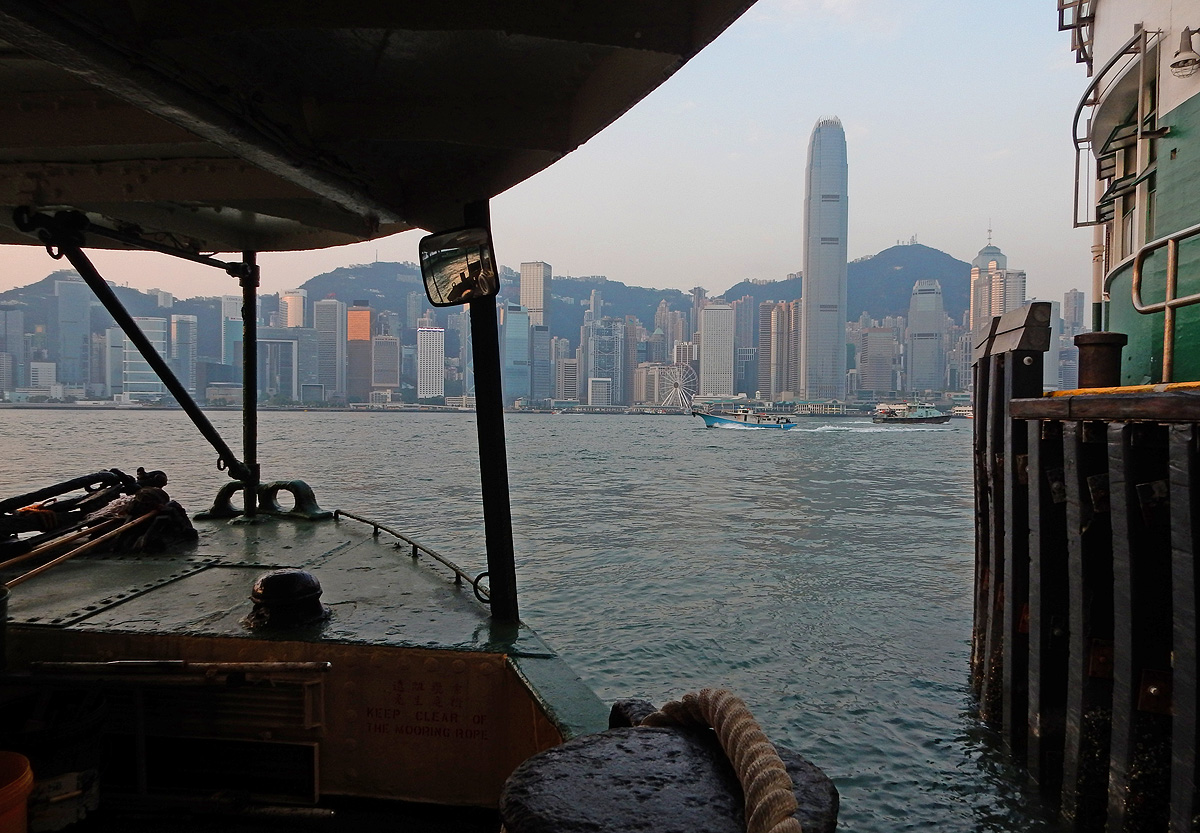 |
|||||
| I visited Hong Kong in November, 2019, for a couple of weeks. The weather was perfect; not too hot and not too cold. Plenty of blue skies for taking photos.
The ongoing "troubles" provided a bit of spice, but they did not stop me from doing all the things that I had planned. Public transport was sometimes unreliable, due to closures of roads and MTR Stations, but there were always alternate ways to get from A to B. They tell me that hotel rooms are really cheap now, so this may be a very good time to pay Hong Kong a visit. The businesses there would appreciate your tourist dollars! |
This photo was taken from the lower deck of the Star Ferry as it was about to leave Kowloon for the Island. | ||||
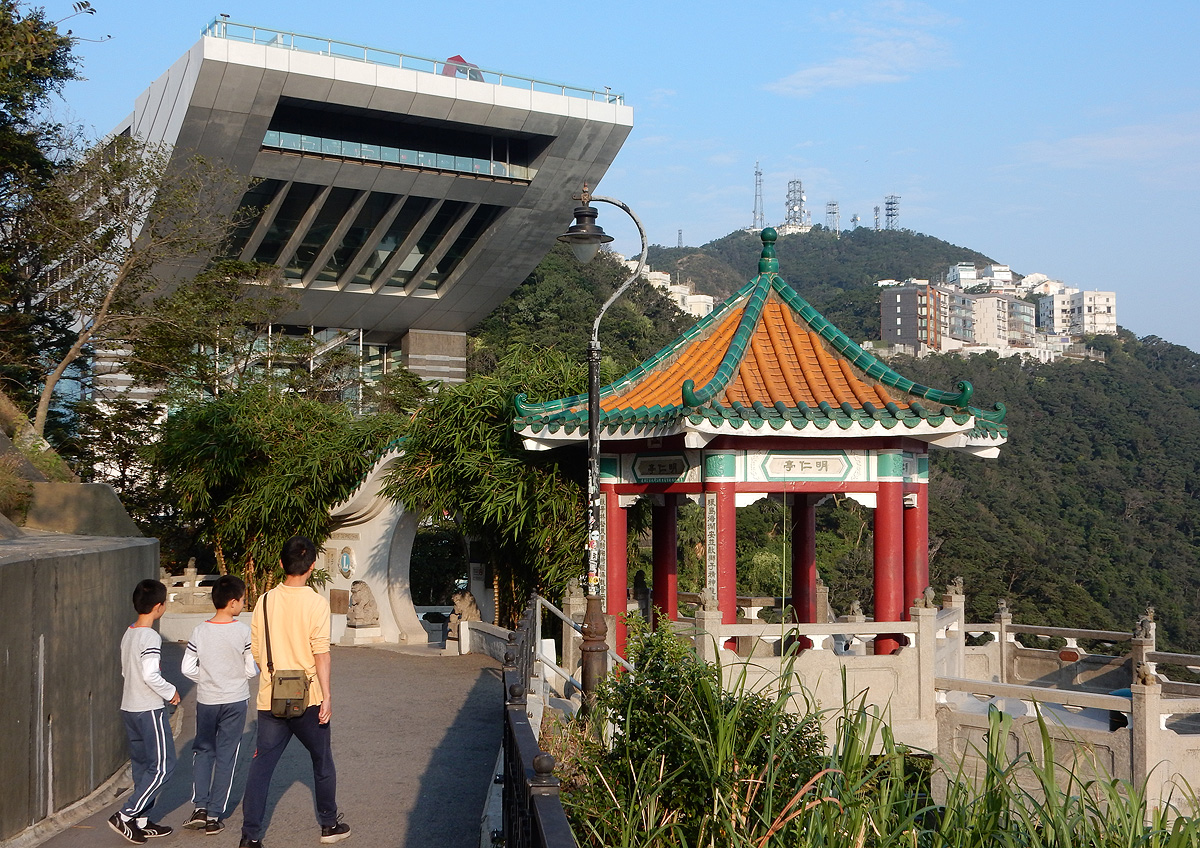 |
|||
| A trip to the Peak is always a must.
In the foreground is the Lion's Pavillion on Findlay Road, with the Peak Tower behind it. Victoria Peak, with its antennae, is in the background. |
|||
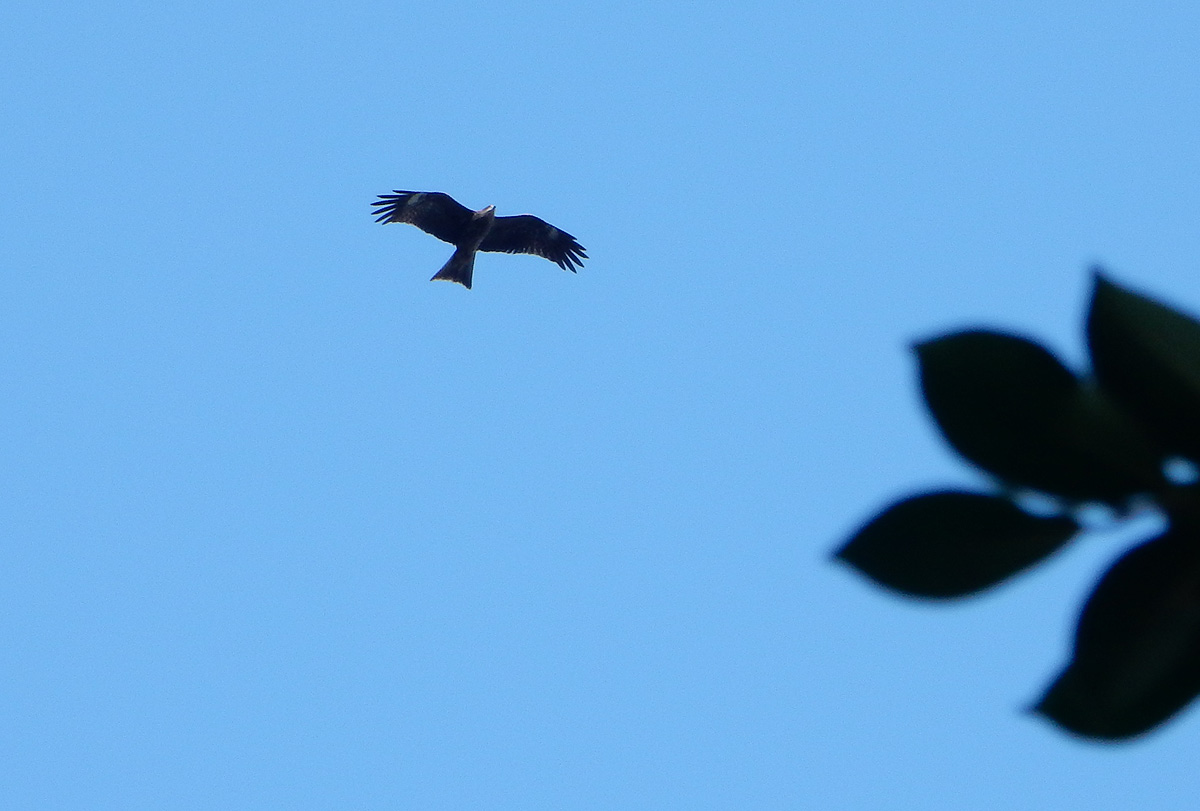 |
|||
| Raptor above! Hong Kong Eagles (Kites?) are thriving. This was taken at the Peak. | |||
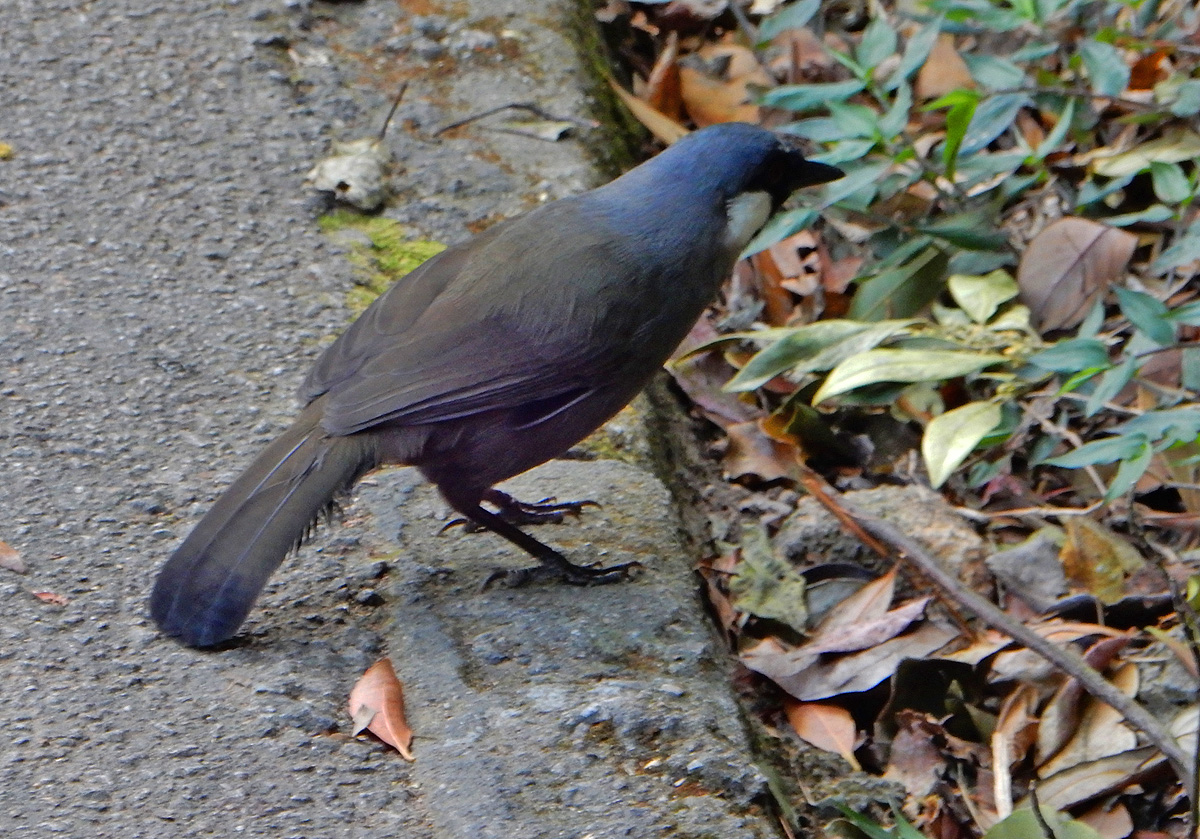 |
|||
| A less intimidating bird, snapped on a path from the Peak to the Mid-Levels of Hong Kong Island. | |||
 |
||
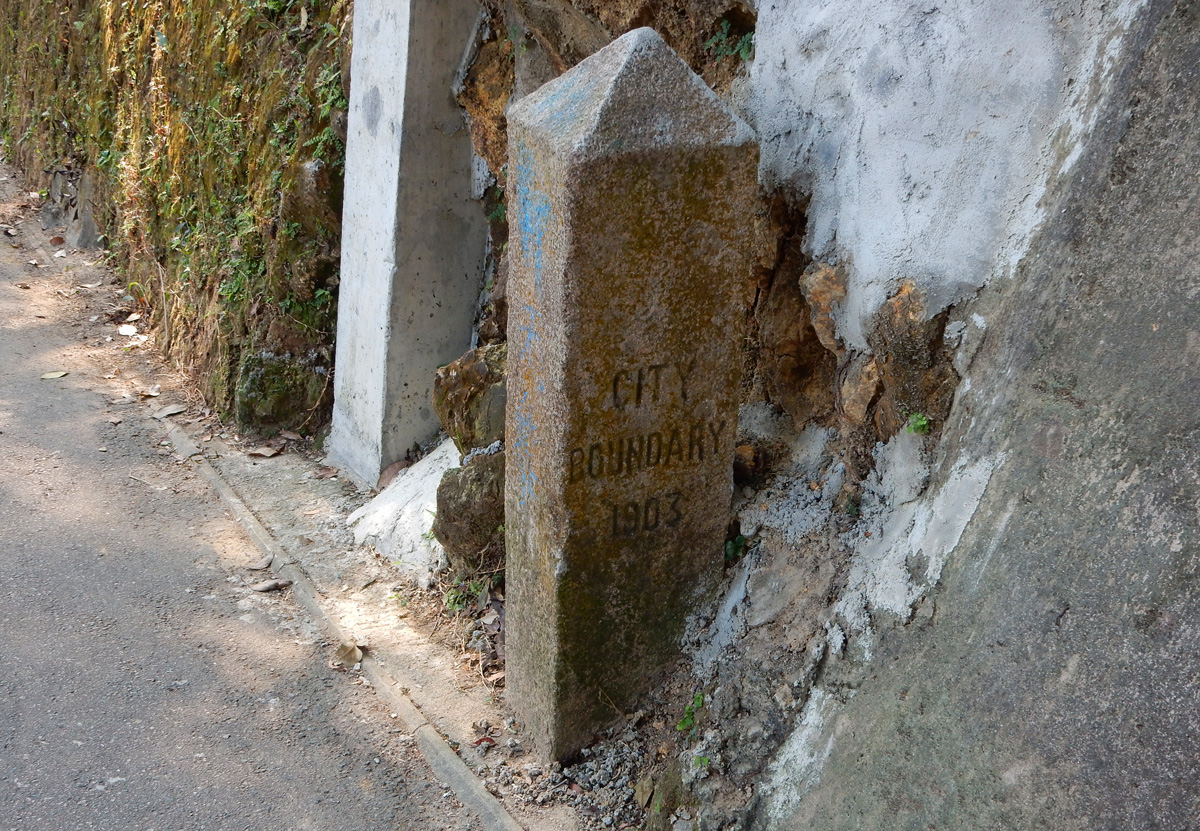 |
|||
| As I walked down one of the many paths to the City below, I came across this old marker showing the City Boundary in 1903. | |||
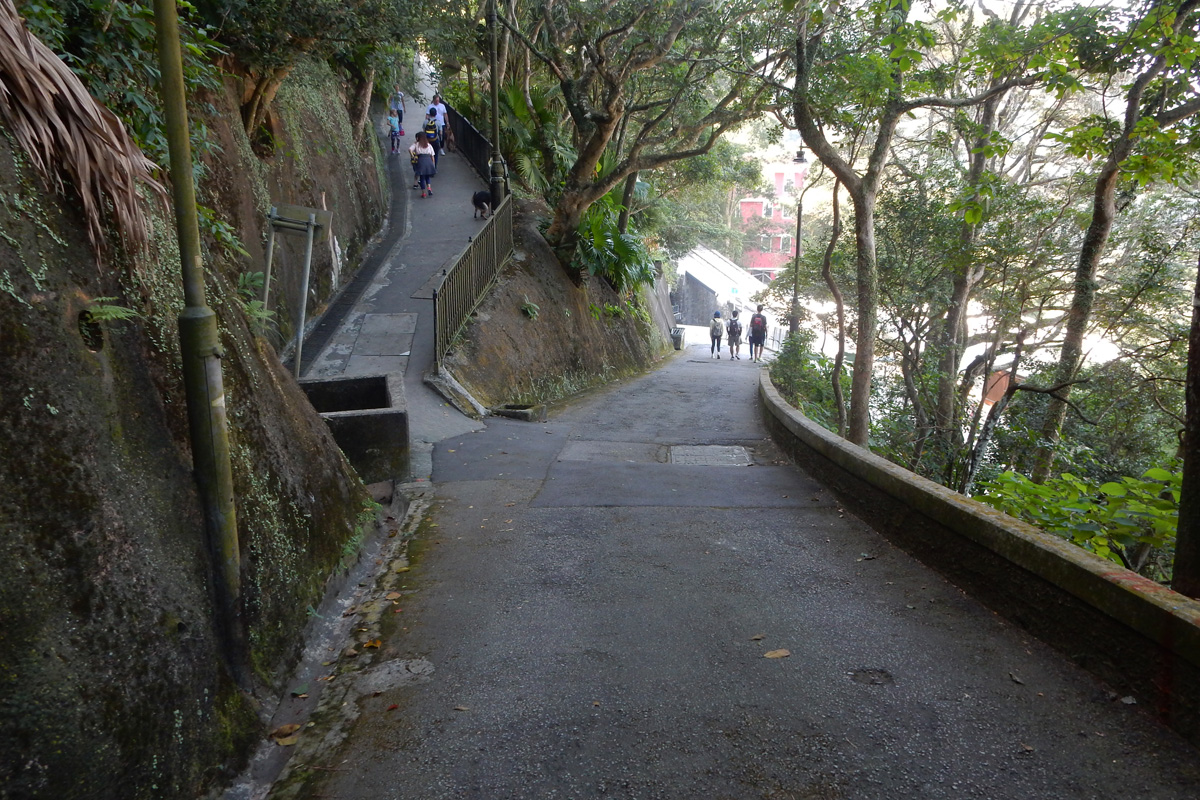 |
|||
| This is the Findlay Path looking down towards Barker Road and the Peak Tram Stop. | |||
 |
|||
| The Barker Road Peak Tram Stop. | |||
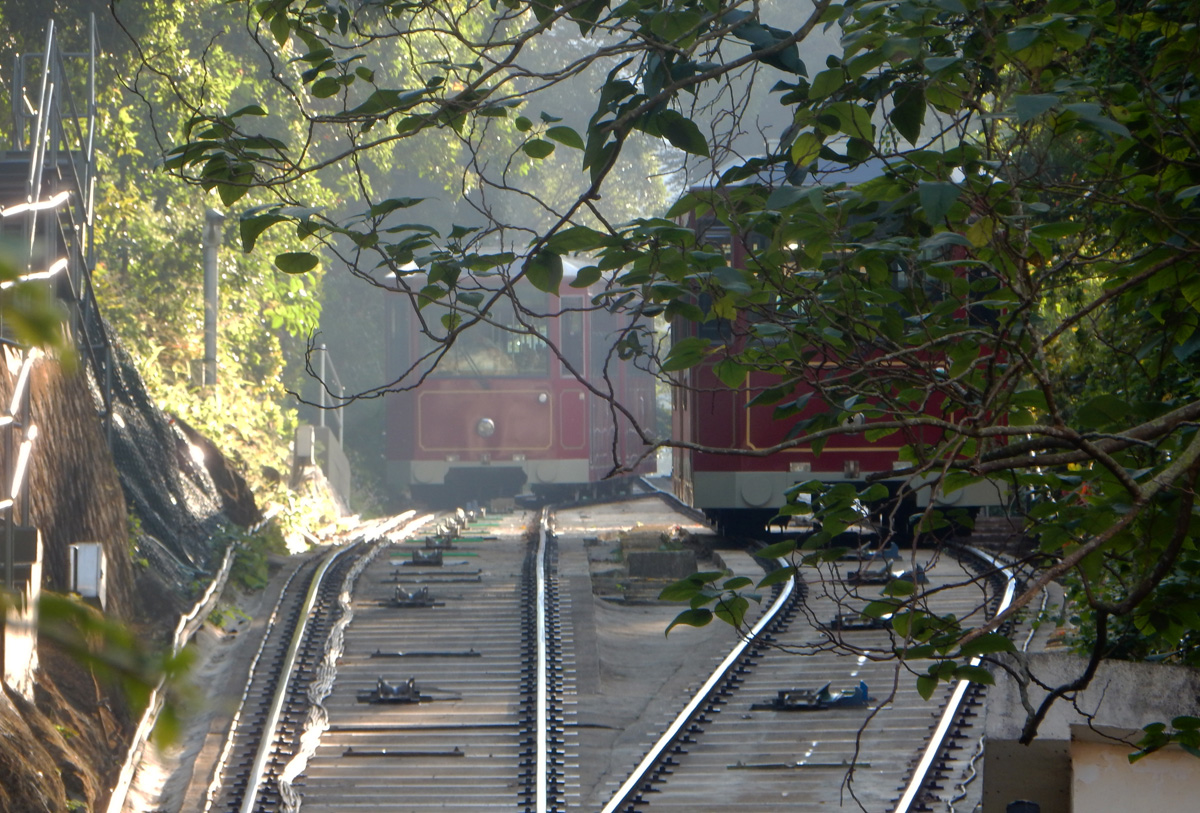 |
|||
| The Peak Tram began its operation way back in 1888. It was an amazing piece of engineering. The two trams counterbalance each other, so that the machinery for moving the trams has much less work to do to haul the trams up the steep hill.
The trams pass each other in a short strip just above May Road. Here you can see the two vehicles passing each other. |
|||
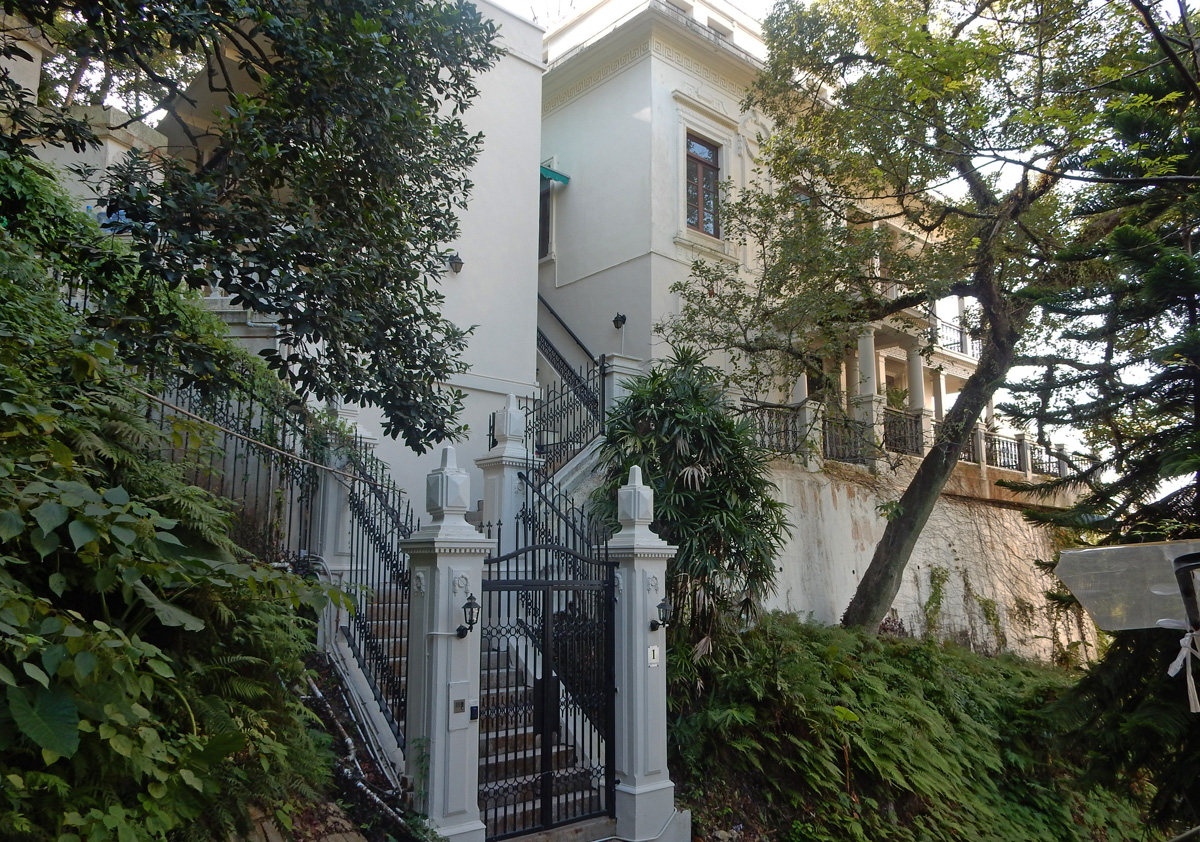 |
|||
| Chatham Path is one of the delightful ways to walk up and down the hill. Along the way there are lots of interesting things to see. This old building is No. 1 Chatham Path, close to the Mid-Levels. | |||
 |
|||
| Halfway down Chatham Path, I took this photo of the old Government House.
It has a slightly Japanese look about it because the tower and the roof were actually built during the Japanese Occupation of Hong Kong during World War 2. |
|||
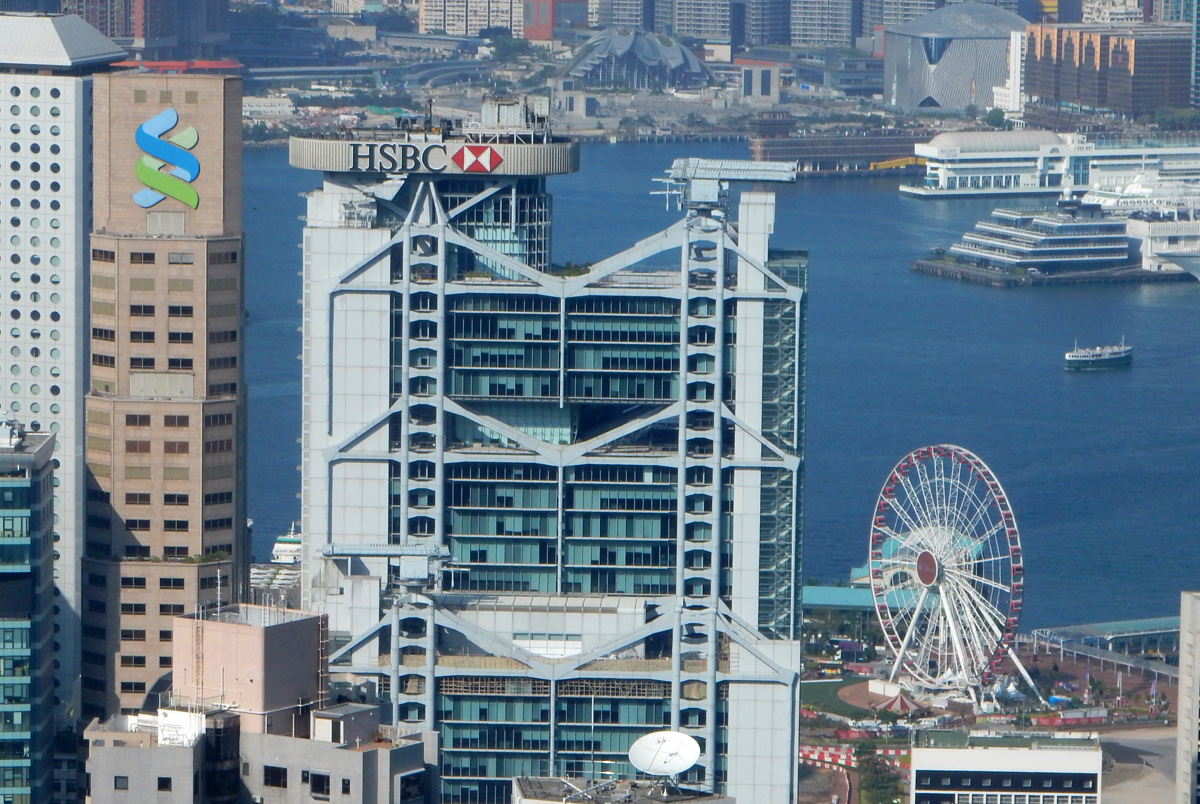 |
|||
| Here is a shot of the latest version of the venerable Hong Kong and Shanghai Bank Building. | |||
 |
|||
| Caine Road is on the Mid-Levels of Hong Kong Island. During World War 2, my family and I were granted refuge in the old Italian (Canossian) Convent on Caine Road. Alas, much of the lovely old Convent is no more, but the old Chapel where I was an altar boy still stands. I was fortunate to receive an invitation to visit this Chapel on this trip. | |||
| This is an old photo showing the Italian Convent as it was during the War.
I used to sneak up to a terrace (indicated in the photo) where I used to lie down on the ground and look through the balustrades and have a Dress Circle view of the American planes sinking Japanese ships in the harbour. The Chapel, which still exists today, is in the middle of the pic. |
 |
|||
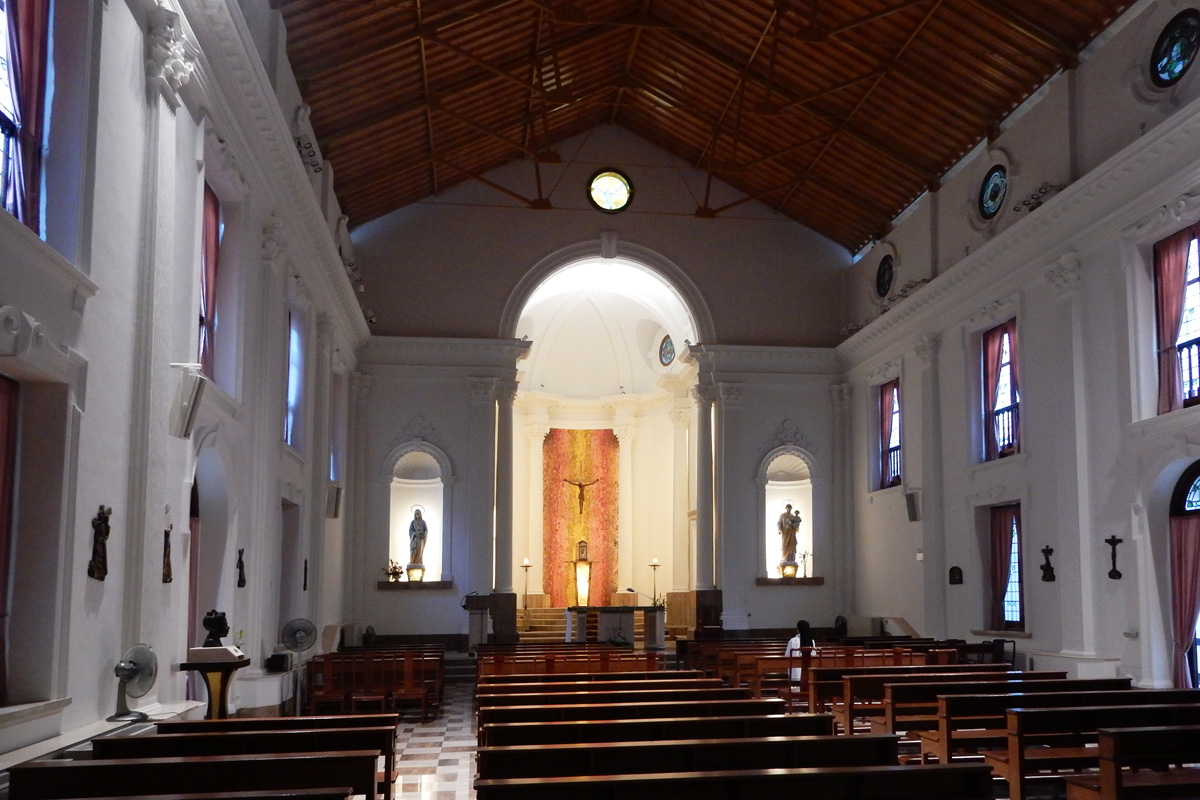 |
|||
| This is the interior of the old Chapel where I was an altar boy during the War. I was 7 years old at the time I began duties at Mass. | |||
 |
|||
| Wonton Soup is always a great comfort food, and on 77 Wellington Street, Central, I had one of the best Wonton Soups ever. Highly recommended. Just get there early otherwise you have to queue up for ages. It is popular. | |||
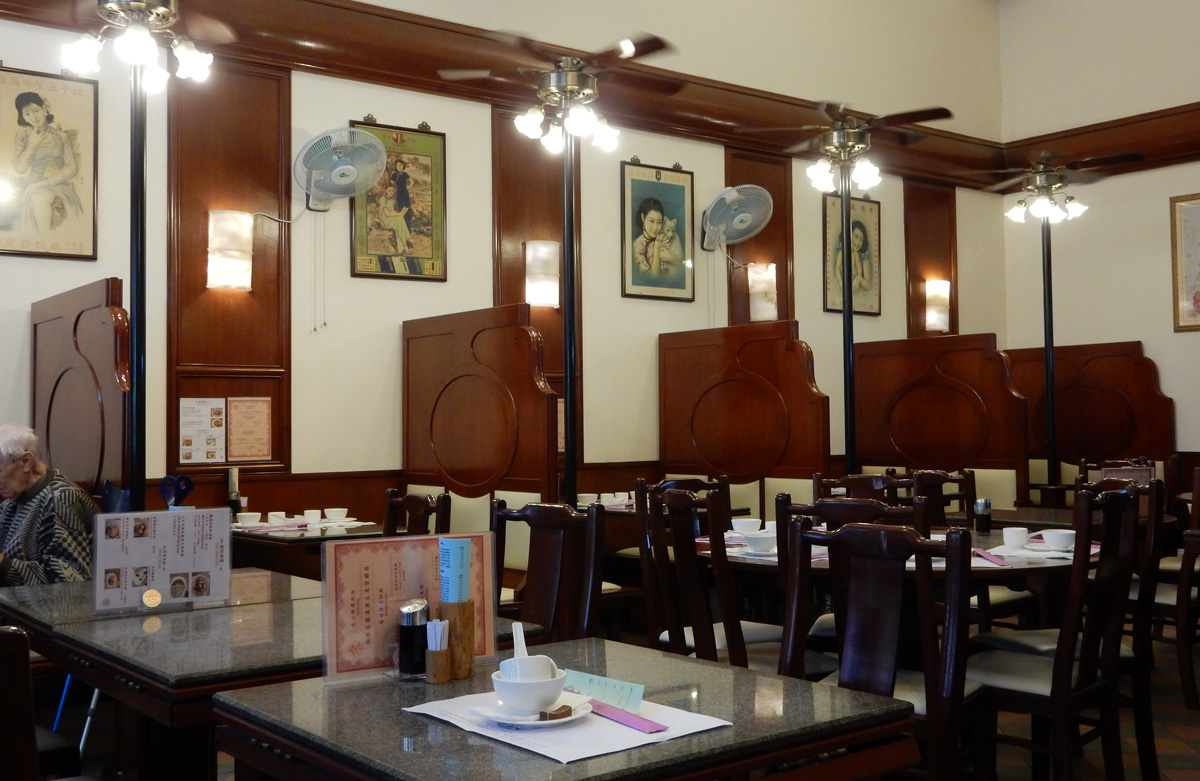 |
|||
| In Happy Valley, there is a great restaurant called "Dim Sum The Art of Chinese Tit Bits". The address is 63 Sing Woo Road, Happy Valley. | |||
 |
|||
| Dekicious! | |||
 |
|||
| There is no shortage of Temples in Hong Kong. The fabulous detail on the roof of this one caught my eye.
It was taken in Shau Kei Wan. |
|||
 |
|||
| Interior of another Temple in Shau Kei Wan.
Shau Kei Wan is towards the East of Hong Kong harbour. As we can see later, there are lovely promenades along the harbour front from Shau Kei Wan all the way to North Point. |
|||
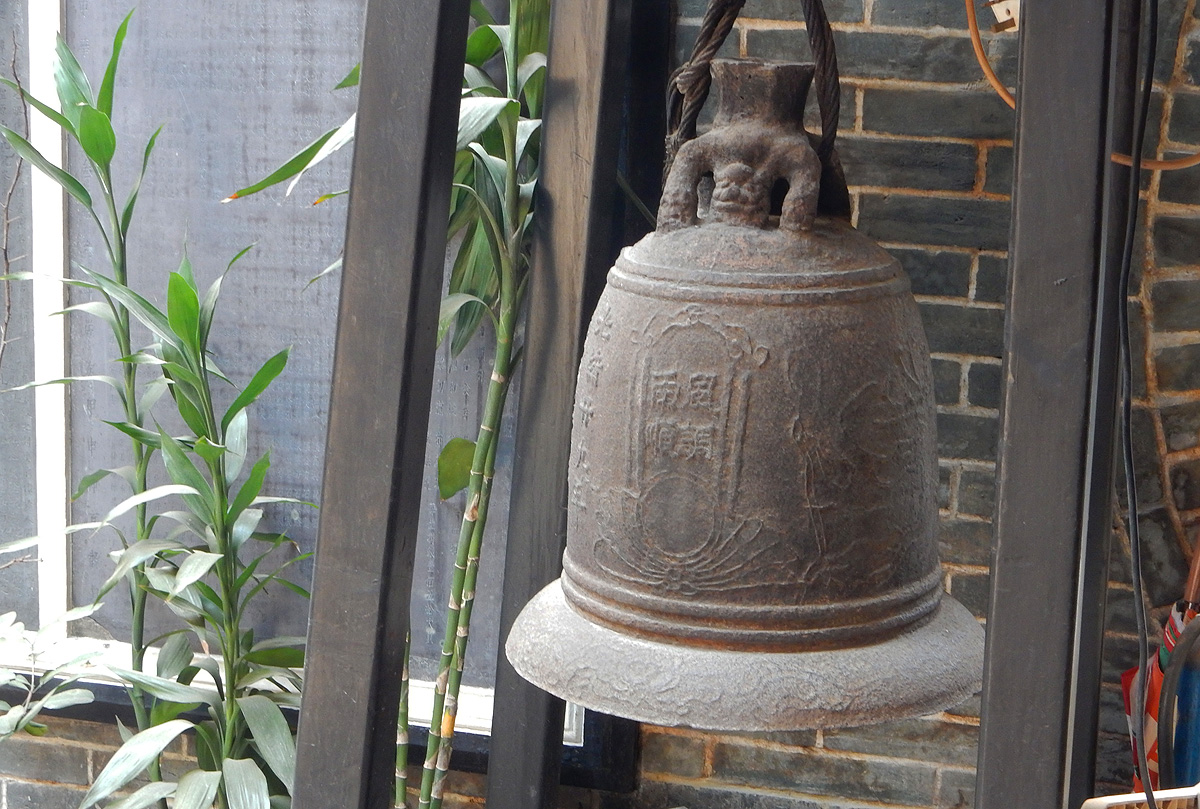 |
|||
| An old Temple Bell. | |||
 |
|||
| There is a large Typhoon shelter for boats at Shau Kei Wan. Across the harbour, we can see Lions Rock on the top left, and Kowloon Peak on the right. | |||
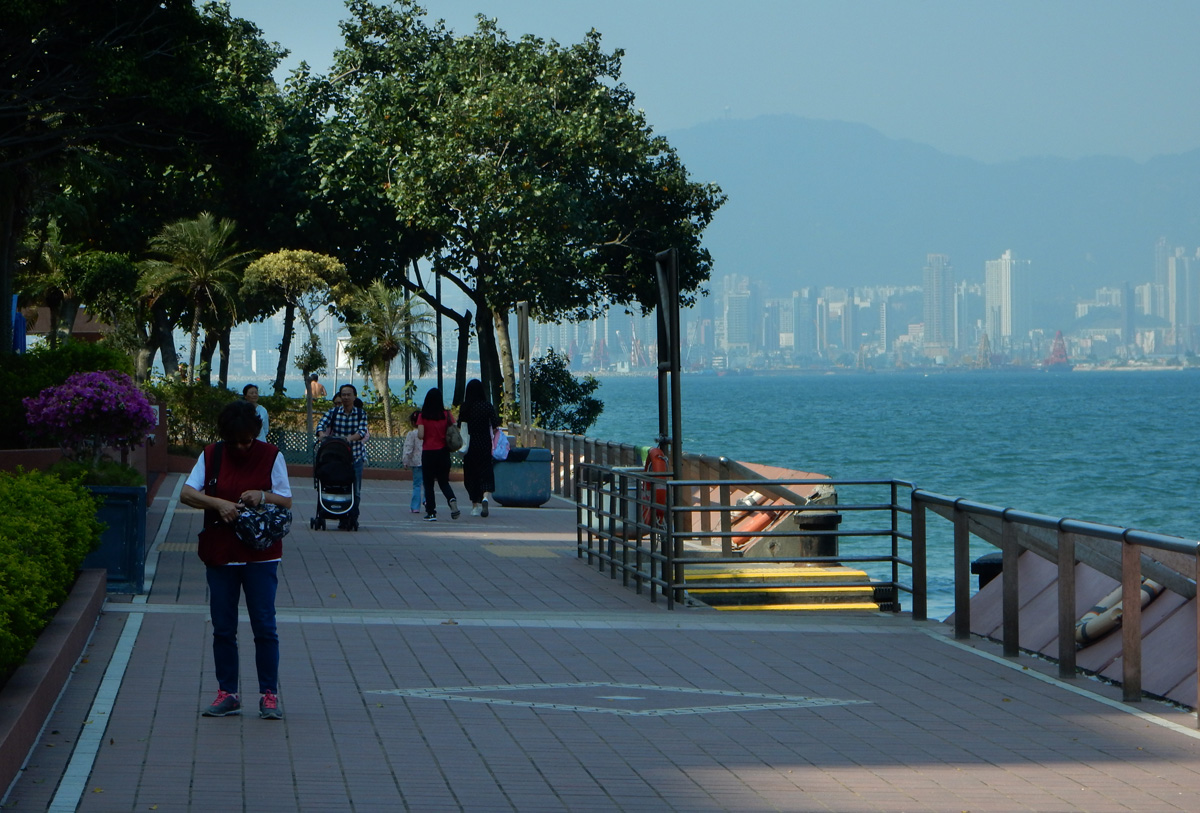 |
|||
| There is a well-maintained and popular promenade stretching from Shau Kei Wan to North Point, all along the waterfront. | |||
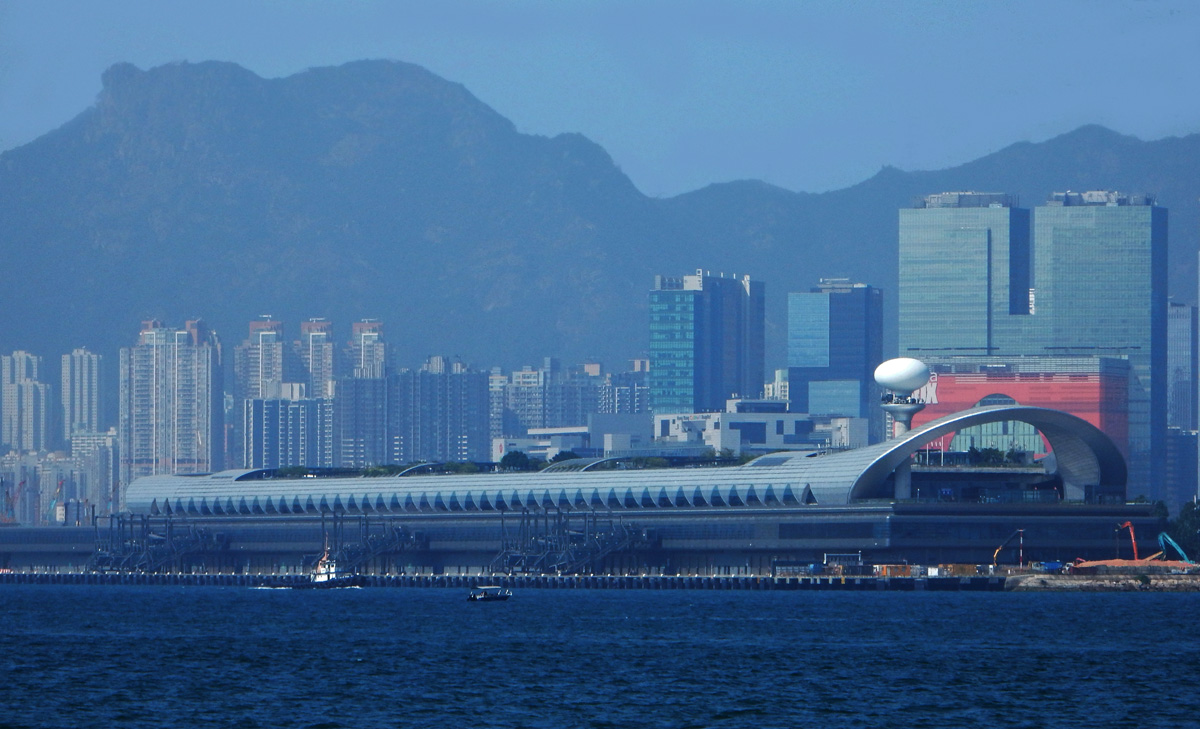 |
|||
| My compact Nikon camera has an amazing 30 times Optical zoom which allows me to take such photos.
From Shau Kei Wan I was able to snap the new Ocean Terminal which sits on what used to be the runway of the old Kai Tak Airport. Lions Rock is standing guard as usual. |
|||
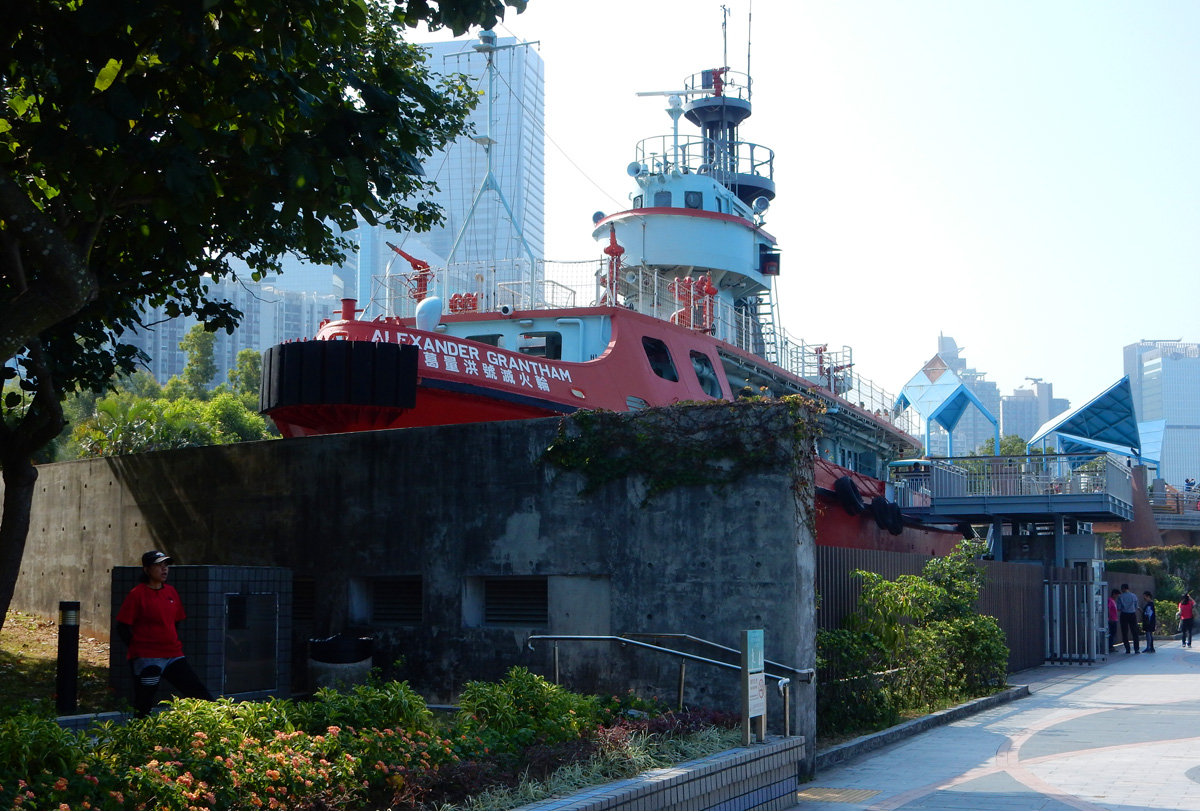 |
|||
| On the promenade, at Quarry Bay, we come across an old Fireboat called the Alexander Grantham, which is now a museum piece up on dry land. It was named after a former Governor of Hong Kong.
The Alexander Grantham was built in Hong Kong in 1953 and was decommissioned in 2002 after 49 years of service. |
|||
 |
|||
| On our stroll along the harbourside promenade, we see a helicopter just about to land on its pad. The cruise ship behind is moored at the old Ocean Terminal near the Kowloon wharf of the Star Ferry. | |||
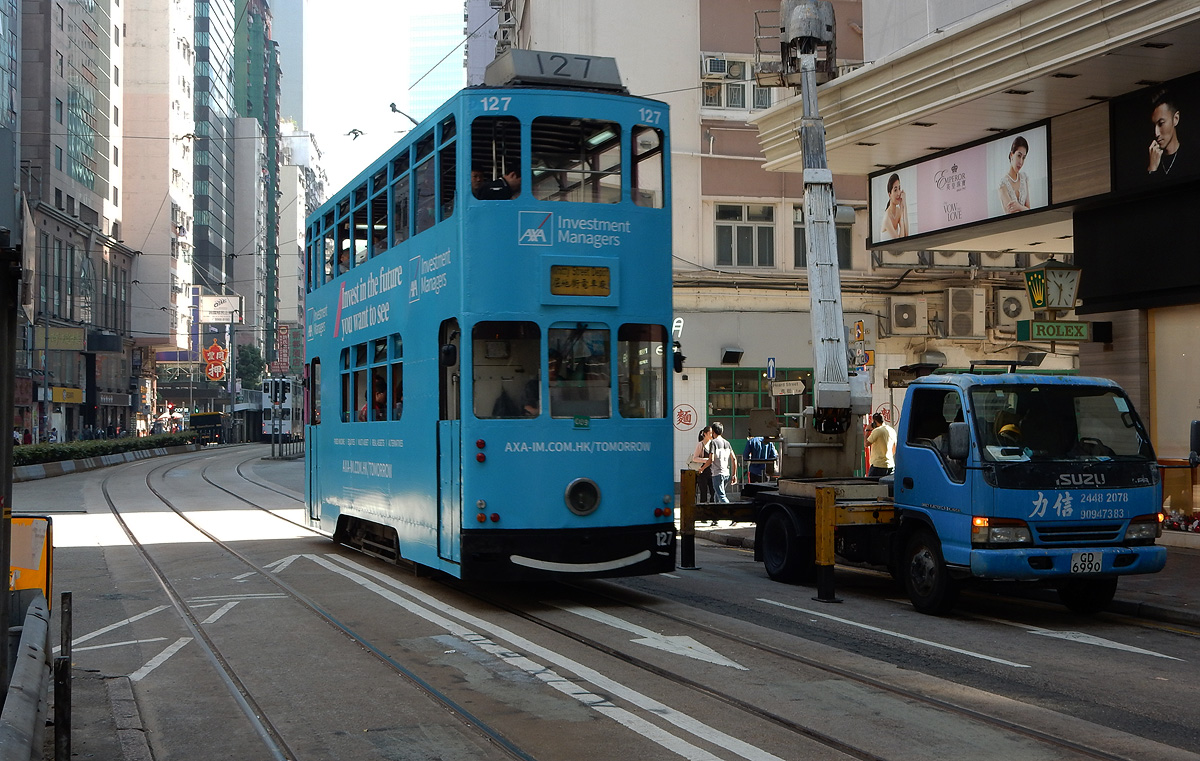 |
|||
| Ding, ding! | |||
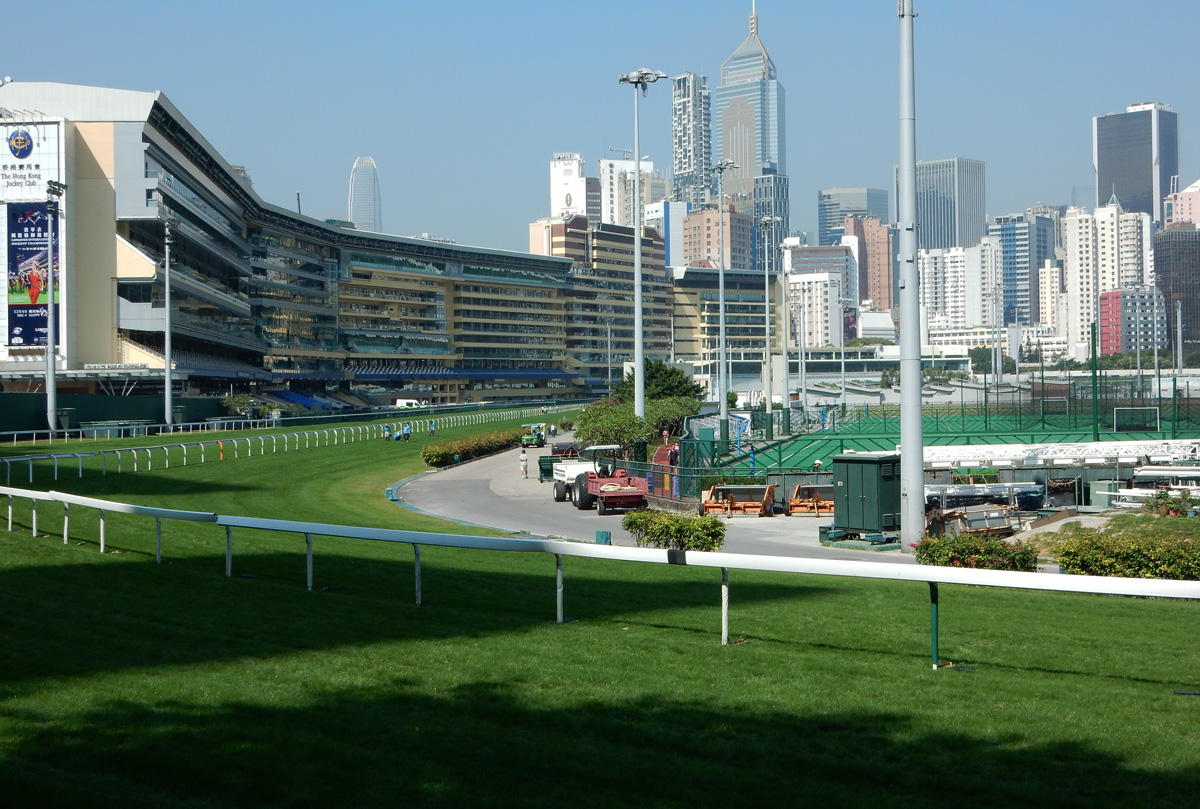 |
|||
| A glimpse at the Racecourse in Happy Valley. | |||
 |
|||
| Still in Happy Valley, not far from the "Art of Chinese Tit Bits", there is this lovely old house from a bygone era. | |||
 |
|||
| In Sheung Wan, which is just West of Central, we look up Ladder Street towards the famous Man Mo Temple. | |||
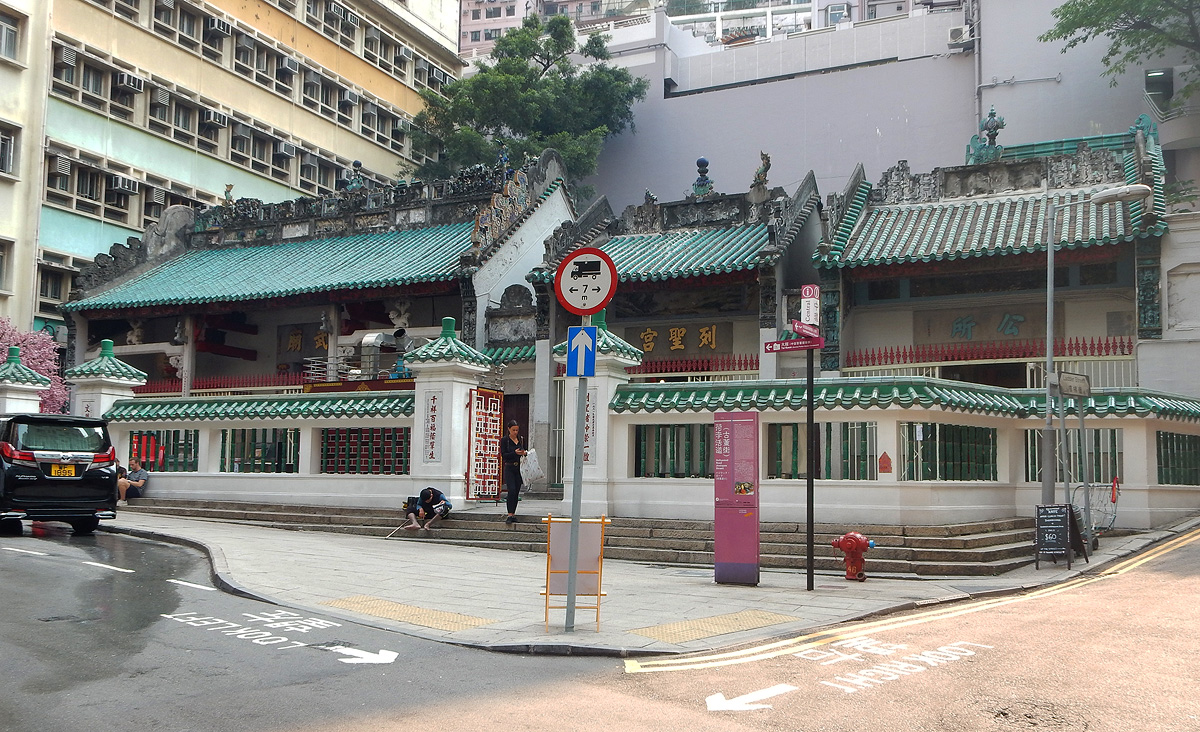 |
|||||
| The Man Mo Temple complex, on Hollywood Road.
When I lived in Hong Kong, I innocently assumed that Hollywood Road was named after the Californian Hollywood, home of the movie industry. I was wrong. Let Wikipedia give us the facts. |
Wikipedia states:
"Hollywood Road was put up early in 1844, before the more famous Hollywood in California was settled. The street runs between Central and Sheung Wan, with Wyndham Street, Arbuthnot Road, Ladder Street, Upper Lascar Row, and Old Bailey Street in the vicinity. Hollywood Road was the second road to be built when the colony of Hong Kong was founded, after Queen's Road Central. It was the first to be completed. Like most major roads in the early years of the colony, Hollywood Road was built by the Royal Engineers. More than 100 years ago, Hollywood Road was rather close to the coastline. In those days, foreign merchants and sailors would put up the antiques and artefacts they "collected" from China for sale here on their way back to Europe. This is how Hollywood Road began its role as an antique market. It was probably named by Sir John Francis Davis, the second Governor of Hong Kong, after his family home at Westbury-on-Trym, near Bristol, England. Another origin mentioned for the name is that holly shrubs were growing in the area when the road was constructed. Such plants were not indigenous to the area and would have been imported." |
||||
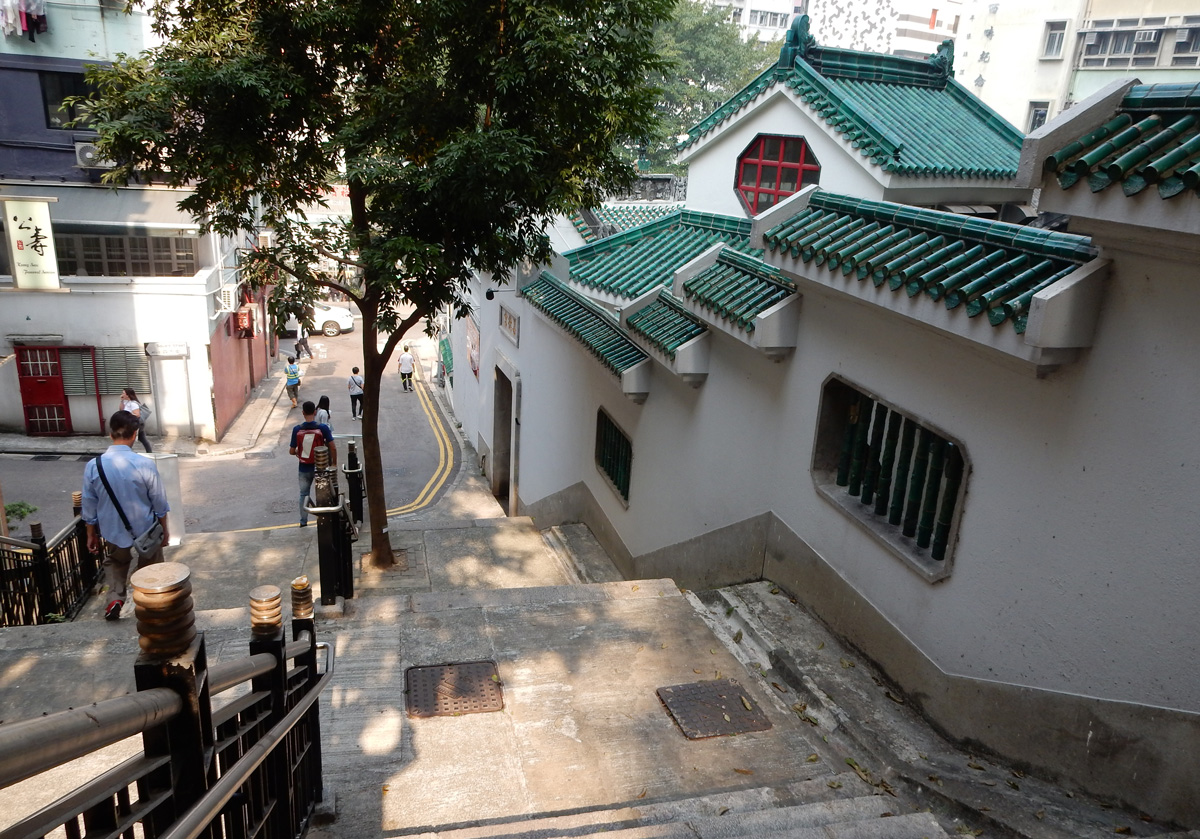 |
|||
| Looking down Ladder Street, with the Man Mo Temple on the right. | |||
 |
|||
| Let's take a little break from looking at streets and buildings, and look at an interesting bit of nature.
This is the Bauhinia Flower, the emblem of Hong Kong. The red-purple orchid-like flower originated in Hong Kong in 1880. Apparently, according to Wikpedia, all the cultivated trees derive from one that was cultivated at the Hong Kong Botanical Gardens. The Bauhinia plant is sterile so propagation occurs only by grafting and cuttings. |
|||
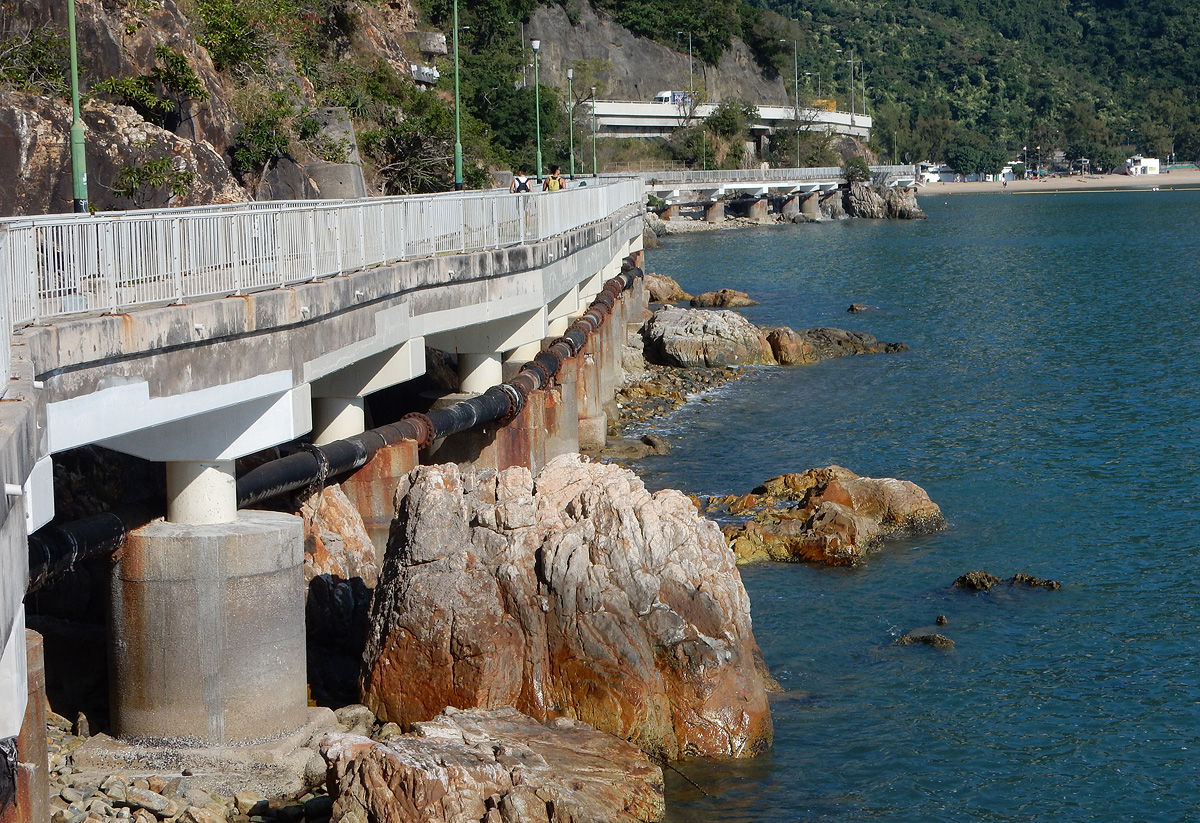 |
|||
| I did a little walk on the Southern shores on Hong Kong Island. I took a train to the Ocean World MTR Station and then walked along Deep Water Bay to Repulse Bay. | |||
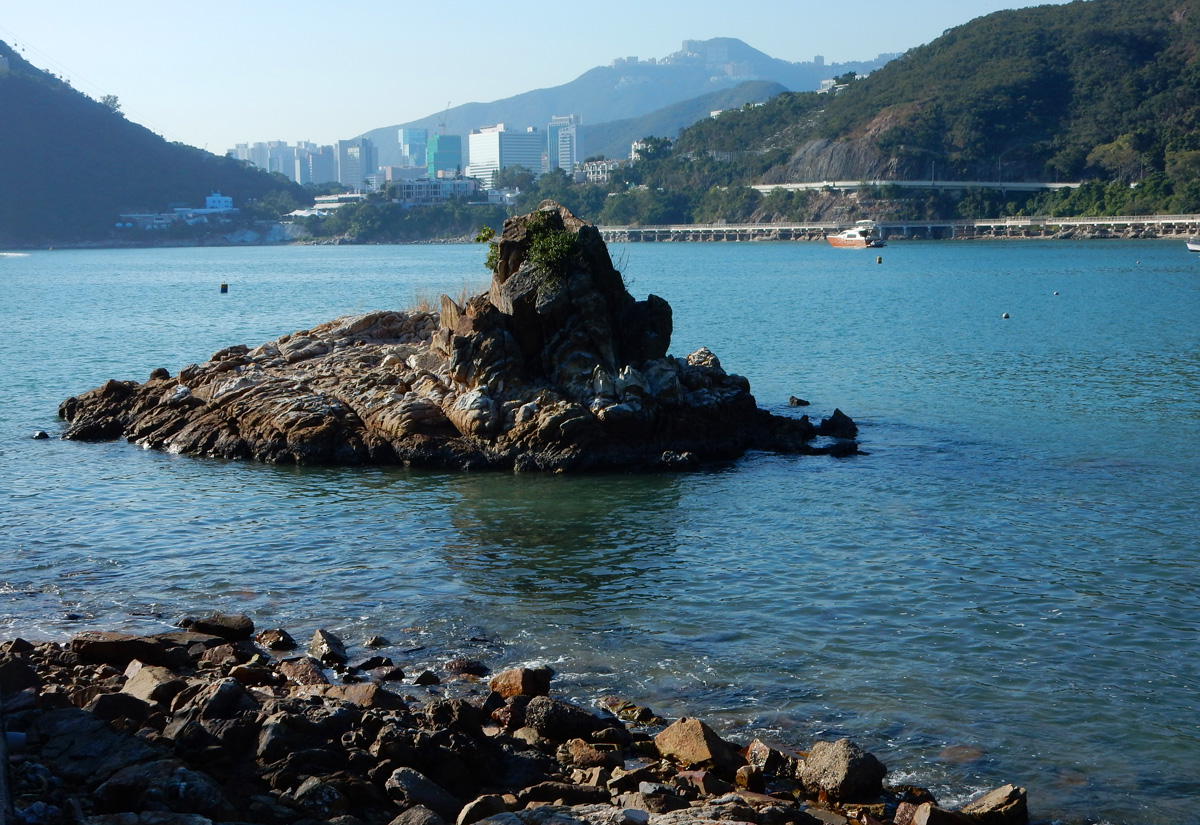 |
|||
| From the Eastern end of Deep Water Bay, we are looking towards Aberdeen. | |||
 |
|||
| This amazing craft was anchored in Deep Water Bay. It is called "Race for Water" and it is entirely propelled by solar power. It is on its second round the world trip, and its mission is to increase public awareness of plastic pollution in our oceans. | |||
 |
|||
| Let's make time to meditate on our walk to Repulse Bay. | |||
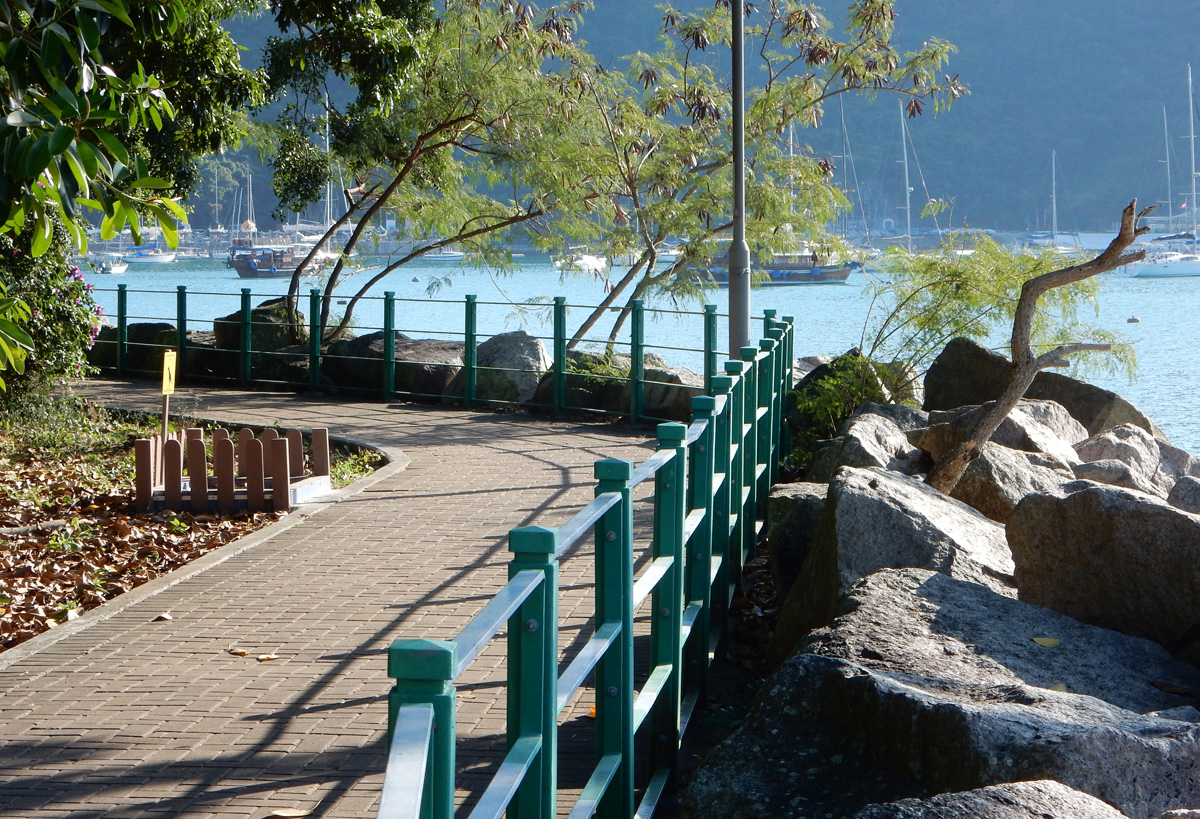 |
||
 |
|||
| That is the Royal Hong Kong Yacht Club on Middle Island. | |||
 |
|||
| We end our visit to Hong Kong Island with a glimpse of the art of boat-buiiding (or boat-repair?) which still exists in Aberdeen, on the Southern shores of the island. | |||
|
To return to the Paintings section of this website, please CLICK HERE
|
|||